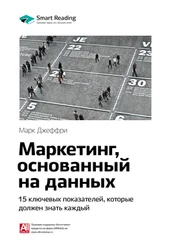Hartung, Adam . Create Marketplace Disruption: How to Stay Ahead of the Competition. FT Press, 2008.
Hartung, Adam. How Facebook Beat MySpace // Forbes.com. 2011. 14 January.
Henderson, Bruce . The Experience Curve Reviewed. The Boston Consulting Group (reprint № 135), 1973.
Kano, N., Seraku, N., Takahashi, N . and Tsuji, S . Attractive Quality and Mustbe Quality // Hinshitsu: The Journal of the Japanese Society for Quality Control. 1984. April.
Karamchandani, Ashish, Kubzansky, Mike and Lalwani, Nishant. The Globe: Is the Bottom of the Pyramid Really for You? // Harvard Business Review. 2011. March-April.
Kim, W. Chan and Mauborgne, Renee . Blue Ocean Strategy: How to Create Uncontested Market Space and Make the Competition Irrelevant. Harvard Business School Press, 2005.
Koller, Tim, Goedhart, Marc and Wessels, David (all McKinsey & Co). Valuation: Measuring and Managing the Value of Companies. 5th edn. Wiley, 2010.
Lauterborn, Robert F., Schullz, Don E . and Tannenbaum, Stanley I. Integrated Marketing Communications. NTC Business Books, 1993.
Marshall, Alfred . Principles of Economics. Macmillan, 1890.
Maslow, Abraham H . A Theory of Human Motivation // Psychological Review. 1943. 50.
McCarthy, E. Jerome . Basic Marketing. A Managerial Approach. R. D. Irwin, 1960.
Porter, Michael E. Competitive Strategy: Techniques for Analyzing Industries and Competitors. Free Press, 1980.
Prahalad, С. K. The Fortune at the Bottom of the Pyramid: Eradicating Poverty Through Profits. Wharton, 2004.
Prahalad, С. K . and Lieberthal, Kenneth. The End of Corporate Imperialism // Harvard Business Review. 1998. July-August.
The Strategic Planning Institute ( www.pimsonline.com )on PIMS.
Tracy, Brian . Million Dollar Habits: Proven Power Practices to Double and Triple Your Income. Entrepreneur Press, 2004.
Раздел 8
Barney, Jay . Firm Resources and Competitive Advantage // Journal of Management. 1991. 17.
Bilton, Chris. Management and Creativity: From Creative Industries to Creative Management. Wiley-Blackwell, 2007.
Bower, Joseph L . and Christensen, Clayton M . Disruptive Technologies: Catching the Wave // Harvard Business Review. 1995. January-February.
Brandenburger, Adam M . and Nalebuff, Barry J. Co-opetition. Doubleday, 1996.
Christensen, Clayton M . The Innovator’s Dilemma: When New Technologies Cause Great Firms to Fail. Harvard Business School Press, 1997.
Collis, David J . and Montgomery, Cynthia A . Competing on Resources: Strategy in the 1990s // Harvard Business Review. 1995. July-August, reprinted as «Competing on Resources», July 2008.
Cummings, Stephen and Wilson, David . Images of Strategy. Blackwell, 2003.
Day, George S . Market Driven Strategy: Processes for Creating Value. Free Press, 1990.
Day, George S . The Market Driven Organization: Understanding, Attracting, and Keeping Valuable Customers. Simon and Schuster, 2007.
Goold, Michael, Campbell, Andrew and Alexander, Marcus. Corporate-Level Strategy: Creating Value in Multi-Business Companies. Wiley, 1994.
Gratton, Linda . Innovation Hot Spots: Why Some Companies Buzz with Energy and Innovation… and Others Don’t. FT Prentice Hall, 2007.
Greiner, Larry E . Evolution and Revolution as Organizations Grow // Harvard Business Review. 1972. July-August; 1988. May-June.
Hamel, Gary and Prahalad, С. K. Competing for the Future, op. cit., 1994.
Kay, John . Foundations of Corporate Success: How Business Strategies Add Value. Oxford, 1995.
Koller, Tim, Goedhart, Marc and Wessels, David (all McKinsey & Co). Valuation:
Measuring and Managing the Value of Companies. 5th edn. Wiley, 2010.
Kotter, John P. Leading Change. Harvard Business School Press, 1996.
Maletz, Mark C . and Nohria, Nitin. Managing in the Whitespace // Harvard Business Review. 2001. February.
Mintzberg, Henry . The Rise and Fall of Strategic Planning. Free Press, 1994.
Mintzberg, Henry, Ahlstrand, Bruce W . and Lampel, Joseph . Strategy Safari: A Guided Tour through the Wilds of Strategic Management. Financial Times Prentice Hall, 1998.
Mintzberg, Henry, Ahlstrand, Bruce W . and Lampel, Joseph . Strategy Bites Back: It Is A Lot More, And Less, Than You Ever Imagined… Financial Times Management, 2005.
Nonaka, Ikujiro and Takeuchi, Hirotaka . The Knowledge-Creating Company.
Oxford University Press, 1995.
Penrose, Edith T . The Theory of the Growth of the Firm. John Wiley, 1959.
Peters, Tom and Waterman Jr. Robert H . In Search of Excellence: Lessons from America’s Best Run Companies. Profile, 1982.
Porter, Michael. Competitive Advantage. Free Press, 1984.
Rumelt, Richard P. Good Strategy, Bad Strategy: The Difference and Why It Matters. Profile, 2011.
Snow, Charles C. and Hrebiniak, Lawrence G. Strategy, Distinctive Competence, and Organizational Performance // Administrative Science Quarterly. 1980 June.
Teece, David J., Pisano, Gary and Shuen, Amy . Dynamic Capabilities and Strategic Management // Strategic Management Journal. 1997. (18) 7.
Treacy, Michael and Wiersema, Fred . Customer Intimacy and Other Value Disciplines // Harvard Business Review. 1993. January-February.
Treacy, Michael and Wiersema, Fred. The Discipline of Market Leaders: Choose Your Customers, Narrow Your Focus, Dominate Your Market. Perseus, 1996.
Zook, Chris. Profit from the Core. Harvard Business School Press, 2001.
Раздел 9
Burgelman, Robert A. and Grove, Andrew S . Let Chaos Reign, then Reign in Chaos – Repeatedly: Managing Strategic Dynamics for Corporate Longevity // Strategic Management Journal. 2007. 28.
Evans, Vaughan . Backing Ul: A Business-Oriented Guide to Backing Your Passion and Achieving Career Success. Business and Careers Press, 2009.
Evans, Vaughan . FT Essential Guide to Writing a Business Plan: How to Win Backing to Start Up or Grow Your Business. FT Publishing, 2011.
Taleb, Nassim Nicholas . Fooled by Randomness: The Hidden Role of Chance in Life and in the Markets. Allen Lane, 2002.
Taleb, Nassim Nicholas . The Black Swan: The Impact of the Highly Improbable. Allen Lane, 2007.
Акционерная стоимость – сумма, которую акционер получит от инвестирования в фирму в виде дивидендов и других выплат и/или увеличения стоимости капитала после выхода из данного бизнеса.
Анализ дисконтированного денежного потока – рассчитываемые годовые входящие потоки наличных денежных средств за минусом выходящих потоков, в том числе и первоначальных капитальных расходов, дисконтированных с учетом альтернативной стоимости капитала, а затем суммируемых, чтобы получить величину чистой приведенной стоимости.
Читать дальше
Конец ознакомительного отрывка
Купить книгу












